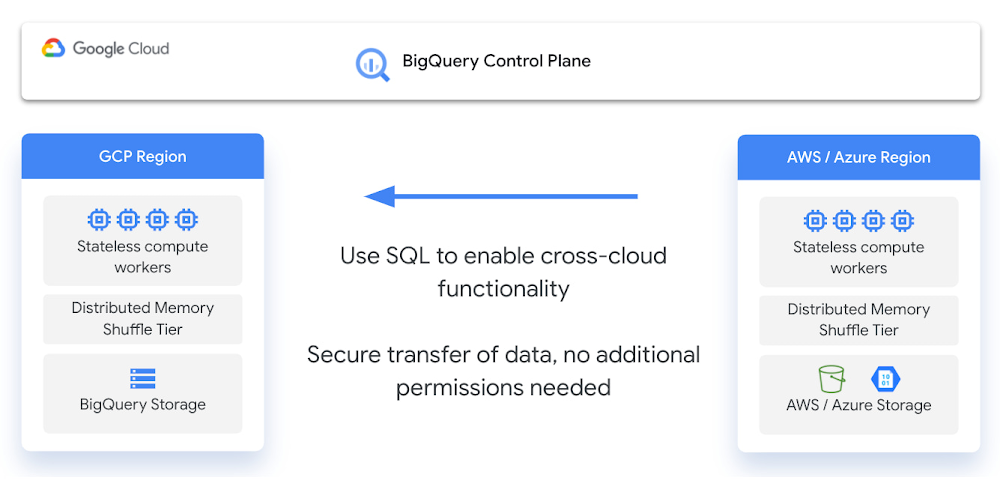IT leaders pick different clouds for many reasons, but the rest of the company shouldn’t be left to navigate the complexity of those decisions. For data analysts, that complexity is most immediately felt when navigating between data silos. Google Cloud has invested deeply in helping customers break down these barriers inherent in a disparate data stack. Back in October 2021, we launched BigQuery Omni to help data analysts access and query data across the barriers of multi cloud environments. We are continuing to double down in cross-cloud analytics: a seamless approach to view, combine, and analyze data across-clouds with a single pane of glass. Earlier this year, one of BigQuery Omni’s early adopters, L’Oreal, discussed the merits of a cross-cloud analytics to maximize their data platform. We know that enterprises need to analyze data without needing to move or copy any data. We also know that enterprises sometimes need to move small amounts of data between clouds to leverage unique cloud capabilities. A full cross-cloud analytics solution offers the best of both worlds: analyzing data where it is and flexibility to replicate data when necessary. Last week, we launched BigQuery Omni cross-cloud transfer to help customers with combining data across clouds. From a single-pane-of-glass, data analysts, scientists, and engineers, can load data from AWS and Azure to BigQuery without any data pipelines. Because it is all managed in SQL, it is accessible among all levels of an organization. We have designed this feature to provide three core benefits:Usability: With one single-pane-of-glass, users tell BigQuery to filter and move data between clouds without any context-switchingSecurity: With a federated identity model, users don’t have to share or store credentials between cloud providers to access and copy their dataLatency: With data movement managed by BigQuery’s high-performance storage API, users can effortlessly move just the relevant data without having to wait for complex pipesA core use case that we have heard from customers is to combine point of sales (PoS) data from AWS/Azure with Google Analytics data and create a consolidated purchase prediction model. Here’s a demo of that:As you saw in the demo, a data analyst can drive end-to-end workflows across clouds. They can transform data using BigQuery Omni, they can load data using cross-cloud transfer, and they can train an ML model all in SQL. This empowers them to drive real business impact by providing the ability to: Improve training data by de-deuplicating users across datasetsImprove accuracy of marketing segmentation modelsImprove Return on Ads Spend and save potentially millions for enterprise campaignsBut we’re not stopping there, we will continue to build upon this experience by providing more BigQuery native tools for our customers to assist with smart data movement. Over time, our cross-cloud data movement will be built on pipeless pipelines: A cross-cloud lakehouse without the fuss. Get involved with the preview and start participating in our development process by submitting this short form.Related ArticleBigQuery Omni now available for AWS and Azure, for cross cloud data analyticsBigQuery Omni helps teams break down silos by securely and cost-effectively analyzing data across clouds.Read Article
Quelle: Google Cloud Platform

Published by